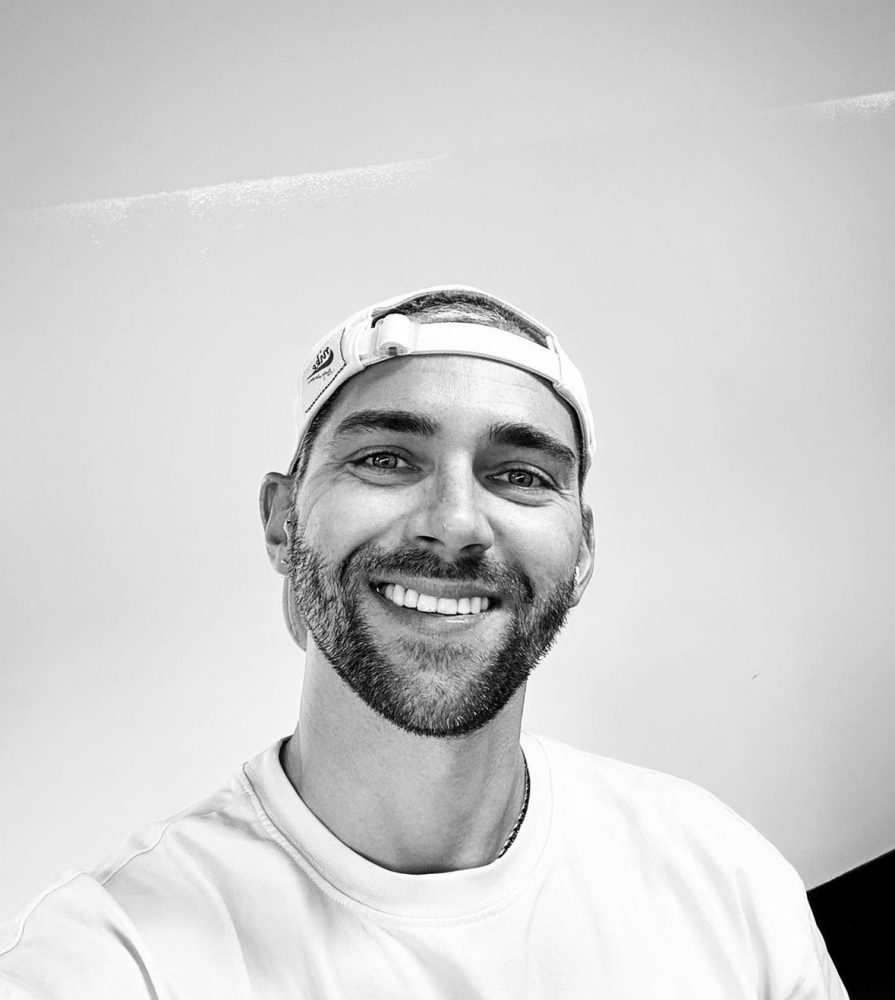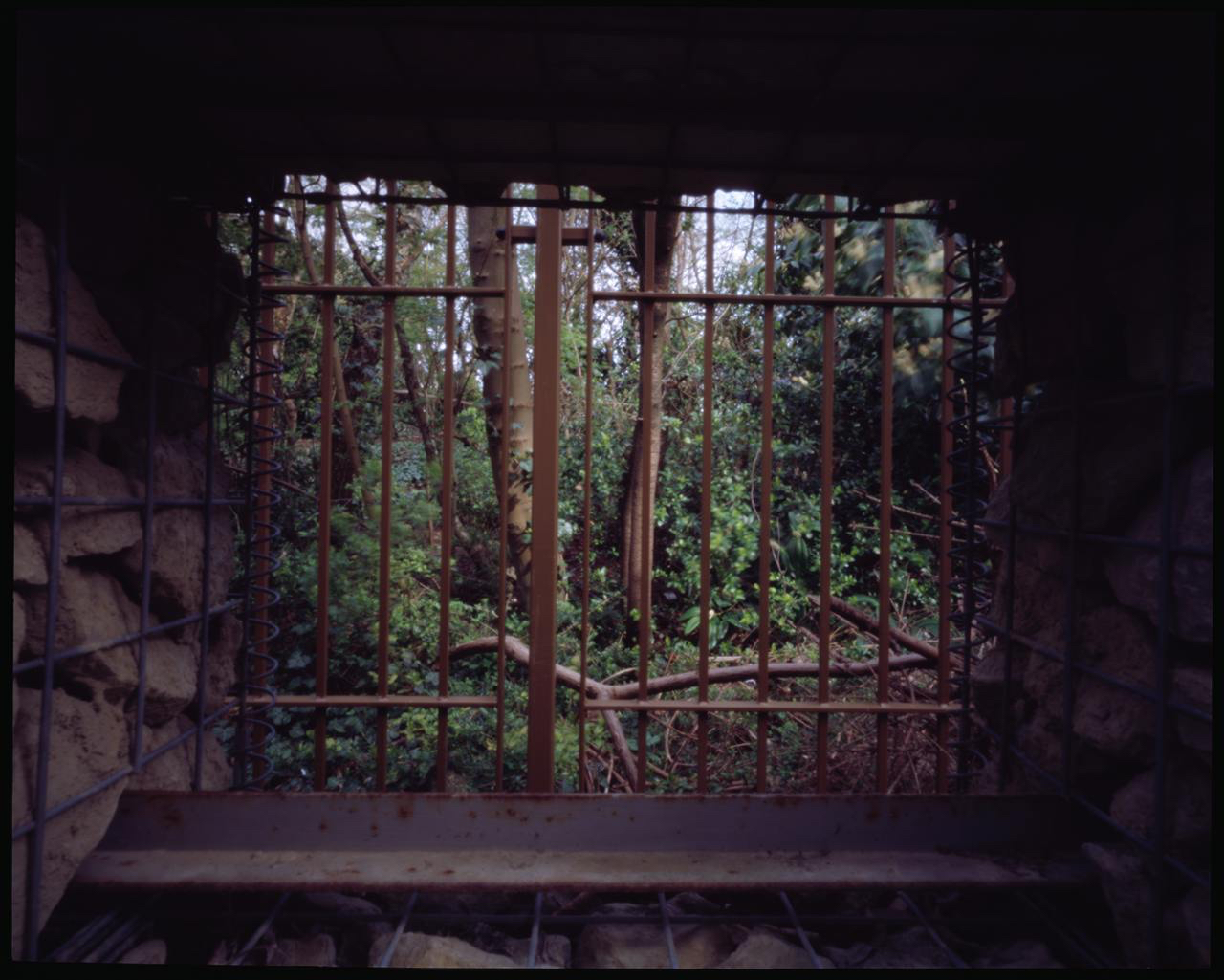SIARHEI YAZLAVETSKI

Interview with Photographer Siarhei Yazlavetski by Volha Arkhipava

Siarhei Yazlavetski, originally from Belarus and now based in London, UK, is a versatile photographer with a passion for landscapes and documentary photography. His work delves into the realms of self-reflection and the creation of surreal worlds, inviting viewers to explore new facets of themselves and their surroundings.
Drawing from his diverse educational background, including master’s degrees in Computer Science, Artificial Intelligence, and Applied Neuroscience, Yazlavetski explores the interconnectedness of ideas, concepts, and the human experience.
Volha Arkhipava is a Cultural scientist, art historian and curator. Leading researcher at the Department of Contemporary Belarusian Art, curator of the »Belarusian Painting« collection at the National Art Museum of the Republic of Belarus.
Author and editor-in-chief of the Internet resource »Belarusian Avant-Garde«. Creates research texts for the KALEKTAR platform.
She studies artistic associations of Belarus, the Belarusian avant-garde of the 1980–1990s, Belarusian abstract art, and studied the biographies of 20th century artists and their work. Creator of the project »The Universe of Yazep Drozdovich«.
Lives and works in Poznań.
Photo credits: Evgeny Kolchev

Art’s ability to highlight and communicate societal issues has limitless potential. The »Journey to Eden« project is a vivid example of how art can delve into the search for self-identity in new conditions, particularly in the context of migration.
The story the author presents is emotionally complex and often ambivalent. It conveys both anxiety and tenderness, safety and loneliness. Through unique techniques and dynamic, sometimes fragmented compositions, the project creates a sense of fleeting harmony, as if glimpsed by chance. This search for harmony—a peaceful, balanced world—becomes a universal puzzle of humanity’s journey toward happiness.
This theme is highly relevant today, as around 200,000 Belarusians find themselves in forced migration, not by choice but due to the political situation in their country. The challenges of legalisation in European Union countries have become a »thorny« path for many Belarusian emigrants.
The project also resonates with the struggles of the LGBTQ+ community in finding their place in the world—a journey marked by challenges of gender adaptation and societal acceptance. Even in their familiar environments, many LGBTQ+ individuals face rejection and often navigate their challenges alone. In a new country and society, this process becomes even more complex. Yet, it is in such environments that individuals profoundly feel their uniqueness, simultaneously grappling with isolation and seeking balance, harmony, and connection with loved ones.
Volha Arkhipava

Why does the theme of migration in your project turn into a journey to Eden? What core idea do you aim to convey in your work?
The project explores themes of seeking refuge, building a new life, self determination, and identity. Since this is the story of a gay couple, it carries an even more complex emotional context. It’s not just about finding safety in a new place but also about accepting oneself in an environment that may not always be welcoming. In the countries of the former Soviet Union, homosexuality often remains a taboo subject, and the protagonists felt like outsiders in their homeland. Yet, even in a new world, the process of adaptation comes with its own difficulties. In this project, I sought to convey the different vectors of their emotional experiences: from the traumas of the past to the complexities of integrating into a new culture.
Were there any stories, themes, or images that inspired it?
The idea for this project emerged about two years ago. At the time, while observing the events in Ukraine, I came across many stories related to migration and the horrors of war. However, I was particularly interested in a different aspect: what happens to people after they relocate? How do they adapt to a new life, and what challenges and temptations do they face?
When I met Oleg and Andrei, they shared their story, which became the inspiration for this series of photographs. I wanted to focus not on the past but on what follows: adaptation, emotional experiences, and new challenges. I had known Oleg for a long time, and our unexpected reunion in the same city encouraged us to collaborate on this project.
Did you use any specific techniques or principles in creating this project?
For this project, I used a pinhole camera and slide film. The pinhole camera allows the duration of a moment to be expressed through blurriness and softness in the image, evoking a sense of anxiety or stress.
For instance, when one of the protagonists appears blurred in a photograph, it symbolises tension, while joint scenes feel more stable, emphasising their mutual support. I also selected locations with distinct visual and symbolic significance. For example, a signpost with multiple directions but no labels symbolises uncertainty about the future. Collaborating with the couple, I often discussed ideas beforehand, allowing us to create images that reflected not only my vision but also their personal experiences.
How do your personality and experience as an artist influence the stories you choose to tell?
My education in fields like artificial intelligence, advertising, and neuroscience helps me combine different approaches in my creative work. I aim to fill my images with symbols and emotions to better convey the protagonists’ experiences.
At the same time, I work on themes that go beyond reality, such as the »Venusian Dreams« project, where I explore solitude and self-reflection. For me, art is a way to better understand myself and the world around me.
What was your role as the author? What strategy did you choose when working with the
project’s protagonists?
Collaboration was key. Oleg brought his expertise in working with LGBTQ+ and human rights themes, which enriched the project with new meanings. Many of the photographs were the result of joint discussions.
For example, the final image, where the protagonists sit on a fallen tree, symbolises a moment of reflection about their future. Initially, I wanted to confine them within the walls of an apartment to convey the fear of the outside world. However, thanks to Oleg’s input, we added an outdoor scene to convey optimism, hope, and a readiness to move forward.



How relevant do you think this story is? What does it symbolise for you and for your
contemporaries?
This story is very personal to me, as I’m also in the process of migration. I moved from Belarus three years ago to study in England. Although my migration wasn’t politically motivated, the adaptation process wasn’t easy. The stress was compounded by the war in Ukraine, as my relatives remain in Minsk. Being part of the LGBTQ+ community, I am also familiar with themes of rejection and alienation. While England is much more tolerant, the traumas of the past still leave their mark. This project became not only a story about the protagonists but also a reflection of my personal experiences, which I continue to process.
How would you characterise the place of your project in addressing issues of self-identity in the migration wave of the 2020s?
This project highlights the challenges of adaptation, whether in terms of LGBTQ+ identity or migration in general. It is both deeply personal and universal, as many people who change countries and cultures go through similar stages: denial, acceptance, adaptation, and integration.
I believe such stories are important because they create space for empathy and allow people to see reflections of their own emotions, feel less isolated in their struggles, and gain the strength to find their own
path.
Do you think art can drive change in addressing global issues?
Art helps move civilisation forward ethically and morally. It sheds light on important issues, evoking an emotional response in viewers that can shift their perceptions. For instance, the challenges faced by the LGBTQ+ community can become more relatable through projects like ours. Art is not just a reflection of the world but also a tool for its transformation.
